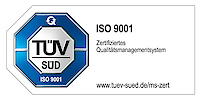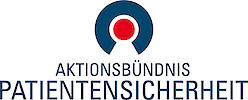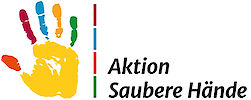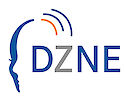Information on the subject of herniated discs
What is a herniated disc?
The intervertebral disc is an elastic disc between the vertebrae of the spine. It is installed between two adjacent vertebrae. Its function is to absorb the body weight that acts on the spine and to distribute it evenly (for example when walking).
In healthy people, the intervertebral disc has no blood supply and is supplied by diffusion (in and out) of synovial fluid. As we age, it is normal for the intervertebral disc to degenerate, i.e. to break down over time. The intervertebral disc is divided into two parts, the outer annulus fibrosus, which consists of strong fiber structures, and the gelatinous nucleus pulposus located within it. The outer part consists of strong fibers that hold the inner part together. The inner part is more viscous and comparable to a type of gel.
Representation of a herniated disc
In a herniated disc, the inner part of the disc protrudes through a tear in the outer part into the spinal canal (freely sequestered) or between the spine and a ligament that covers the spine (subligamentary). The spinal cord or the nerve roots of the spine can become trapped, which is why the symptoms occur.
What causes a herniated disc?
There are many causes of degeneration of the intervertebral discs. These include persistent pressure on the intervertebral disc tissue, incorrect loading of the spine, a lack of supply of nutrients to the intervertebral section, lack of exercise and poor tissue quality due to heredity.
What symptoms can occur with a herniated disc?
In a herniated disc, radicular (related to nerve roots, radix) pain or discomfort can occur. This is pain that is caused by the compression of a nerve root. Each spinal segment has two nerve roots on each side (right and left). The posterior nerve root, for example, receives information about the pain in an arm. If you burn your forearm, the burning pain is transmitted via nerves in the arm to the posterior root and from there via the spinal cord to the brain. We then consciously feel pain in the forearm.
The anterior nerve root works in the other direction. It transmits information from the brain to the arm, for example that it should move. Understandably, a herniated disc can therefore cause paralysis, spasticity or various pains and discomforts. In addition, a herniated disc can lead to myelopathic damage if the spinal cord is directly compressed. Because all the fibers of the nerve roots are transmitted to the brain via the spinal cord, movement or sensation can also be affected.
Myelopathic damage can even lead to paraplegia below the herniated disc, since all the fibers that contain all the feeling and movement information of the parts of the body below the herniated disc run through the spinal cord. For example, you can be paralyzed below the belly button if a complicated herniated disc occurs at this level.
Herniated disc: conservative therapy or surgery?
Conservative therapy is initially scheduled for 4-6 weeks if there are no neurological deficits (e.g. sensory disturbances or paralysis). This includes local heat therapy, medication for pain and inflammation, massages, electrotherapy and physiotherapy. Complete rest of the patient is now avoided. It has been shown that moderate exercise supports the healing process more effectively than lying down completely.
If conservative therapy fails, the volume of the disc can be reduced by suctioning fluid from it (intradiscal volume reduction). If there are motor deficits and signs of spinal cord compression, disc surgery is recommended. Due to the relatively high rate of complications, it is recommended to only operate in urgent cases (necessity of surgery).
Herniated disc healing process
Most herniated discs usually heal without surgery using conservative therapy measures. The duration of the healing process varies from individual to individual. This also applies to the healing process after disc surgery. After the therapy phase, a rehabilitation phase follows the operation and in some cases after the completion of conservative therapy. This includes outpatient or inpatient rehabilitation and reintegration into the work process. In the case of an uncomplicated herniated disc, it takes around 12 weeks for the patient to be fit again. However, the healing process can also be faster or slower. The patient is required to cooperate with exercise therapy and be very patient. General prognoses are rather difficult because every herniated disc and every patient is different.
Which doctors and clinics are specialists in the treatment of a herniated disc in Germany or Switzerland?
Anyone suffering from a herniated disc wants the best medical care for themselves. That is why the patient asks themselves, where can I find the best clinic for a herniated disc surgery or a herniated disc specialist?
Basically, various specialists can diagnose a herniated disc. The first doctor to see for back pain, sensory disturbances or paralysis is usually the family doctor. This can decide whether a referral to a neurologist or orthopedist is necessary. Patients can also contact an orthopedist directly or, in the case of acute severe pain and paralysis, go directly to an orthopedic and spinal surgery clinic as an emergency. Both general practitioners and orthopedists and neurologists can very reliably suspect a slipped disc based on the symptoms, a physical examination and the history of how the slip occurred.
To confirm the diagnosis, specialists usually use imaging techniques such as magnetic resonance imaging or computer tomography. Neurological examinations can also help with the diagnosis. Sensitivity and reflexes are checked or the nerves, their excitation and their conduction speed are tested using specialised techniques (evoked potentials, EMG, nerve conduction velocity). If a slipped disc operation is necessary, specialists in spinal surgery are the right people to contact.














